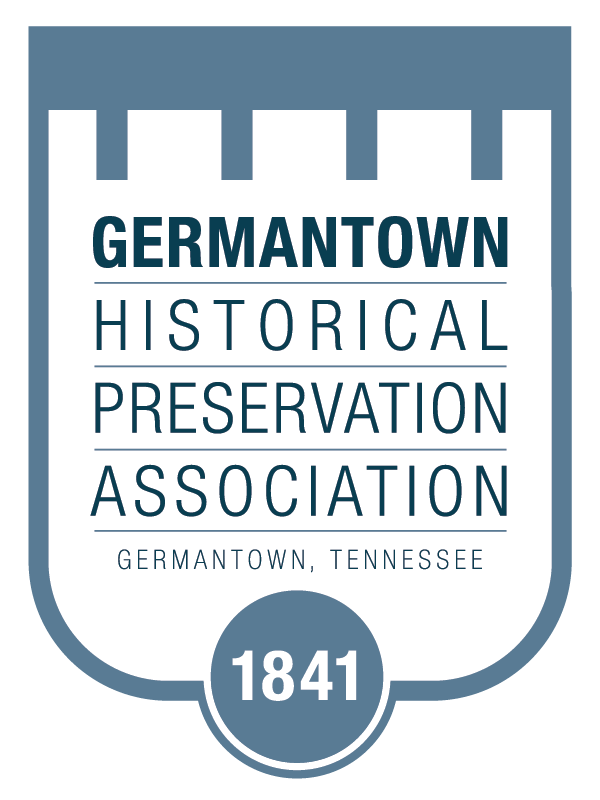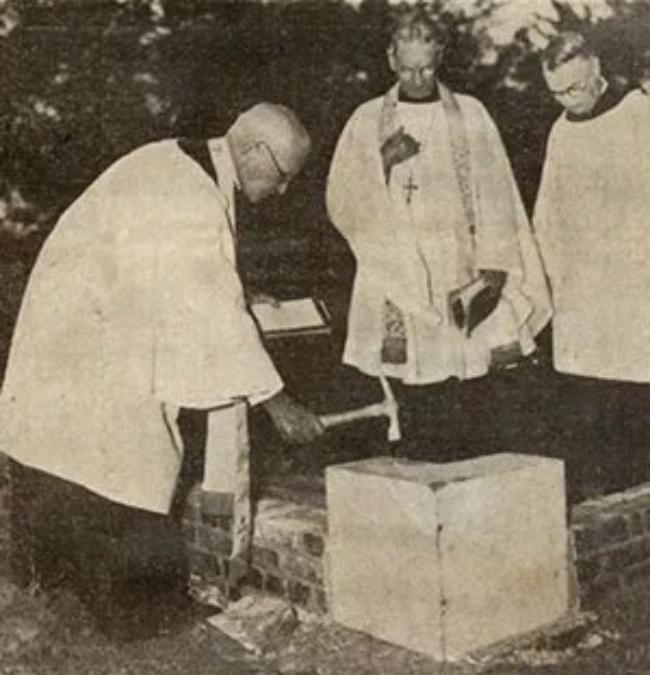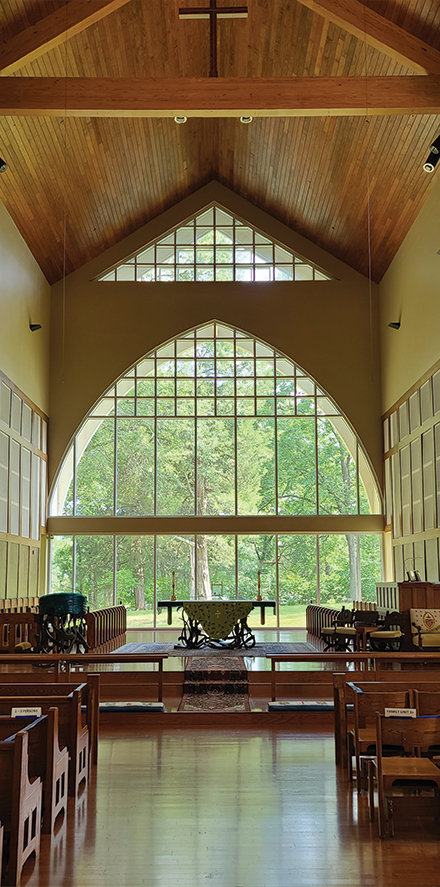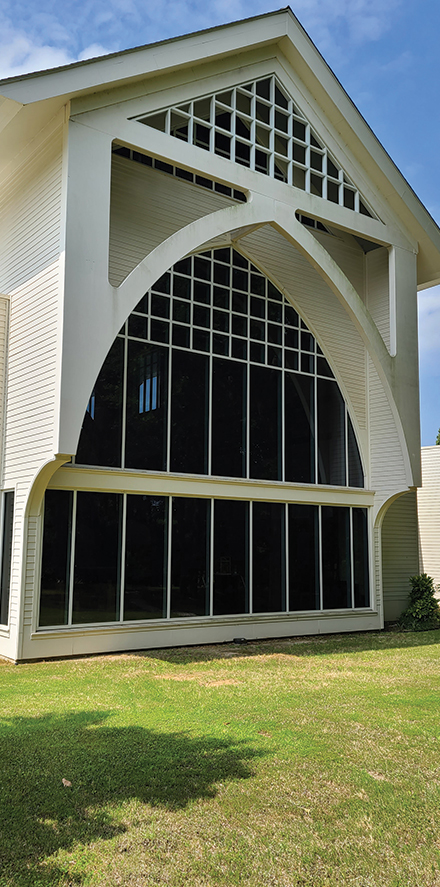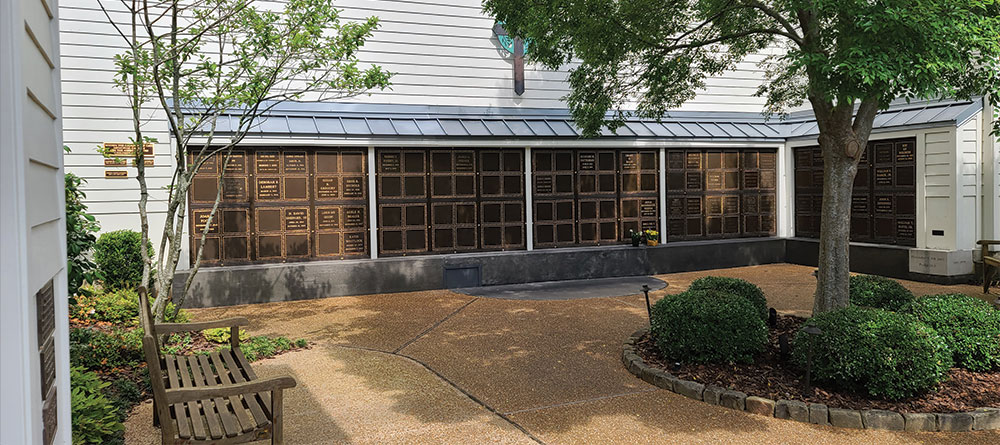
St. George Episcopal Church
By Mark Trammell
In the late 1800s, no Episcopal Church existed in Germantown, Tenn. Any Episcopalian who wished to worship on Sundays needed to travel by horse and buggy or on foot either to St. Andrew’s Church in Collierville or Calvary Church in Memphis proper. By 1907, an Episcopal minister, Rev. Prentice Hugh, would come once or twice a month to Germantown Presbyterian Church to conduct an Episcopal service.
A group of laypeople, led by John B. Scruggs and John Hebron, decided to pursue the idea of forming and erecting an Episcopal church in Germantown. The small congregation held its first service Sunday, June 17, 1934, in a Masonic Lodge on Germantown Road. Scruggs arranged for the use of the Masonic Lodge, paying 50 cents per month to do so while plans for an independent building began to form. On August 1, 1934, 12 persons applied for an Episcopal mission in Germantown. Those applicants were:
- John Hebron (1st Warden)
- Mary Hebron Graves
- Carl R. Graves (1st Junior Warden)
- John B. Scruggs (Lay reader)
- Marie “Mamie” Cloyes
- Charles E. Speer (1st Treasurer)
- Elizabeth D. Speer
- Hiram T. Adair
- Edwin S. Williamson
- Joseph A. Martin (1st Secretary)
- Frances W. Martin
- Geraldine A. Martin
The Diocese of Tennessee formally admitted the congregation as a mission to the diocese on Jan. 24, 1935.
The church’s founders decided to name their congregation St. George’s for two possible reasons: first, potentially to honor two recently deceased boys, both named George, who were sons of parishioners; and second, as a nod to St. Andrew’s in Collierville, as Scotland named Andrew its patron saint while England chose George.
St. George’s parishioners worshipped in the Masonic building for 33 months before moving to a newly constructed home across the street on the corner of Germantown Road and Spring Street. They laid the initial cornerstone for the first chapel on Oct. 11, 1936, at 4:30 p.m., and the building was completed and consecrated on Easter Sunday, March 28, 1937, at 4 p.m.
John Scruggs served as the de facto leader of the church until March 1937 when the bishop appointed a deacon-in-charge, Dr. Sterling Tracy, to the congregation. The church, however, lacked a stabilizing force as the consistent presence of a priest-in-charge would not be found until 1940 with the Rev. Charles Widney.
On Thursday, Jan. 30, 1944 St. George’s graduated from mission-hood, becoming a parish in the eyes of the diocese. Rev. Widney became the church’s first rector. Though World War II unsurprisingly halted growth, by the time Widney resigned in 1952, attendance had doubled.
The Rev. Thomas A. Roberts, a deacon, took charge of the parish in Aug. 1952. Under his tenure, the church would grow enormously in a physical sense. He oversaw the building of a new worship space on a new piece of property on Poplar Avenue. As a result, upon his ordination to the priesthood in Feb. 1953, the St. George’s vestry immediately named him the church’s second rector.
Succeeding Roberts in 1957 was the Rev. Frank M. McClain, under whose watch a day school formed at the Poplar Avenue campus in conjunction with the church. The Rev. David E. Babin followed McClain as rector in July 1962, and the Rev. Robert Cherry followed the Rev. Babin in June 1965.
The Rev. Sidney Ellis took over in April 1967, and during his tenure, the church built a new parish hall and gym as well as eight new school classrooms. Fours years later, the Rev. C. Allen Cooke succeeded the Rev. Ellis, making St. George’s his home for the next 15 years, to the delight of the vestry and congregation who had tired of what felt like a revolving door of rectors.
By 1979 the church’s growth had steadily continued, necessitating a larger worship space for its congregation. The consecration of that new space on the Poplar Avenue campus occurred in 1979, while the former worship space became a parish hall and offices. A year and a half later the church hired its first assistant rector, the Rev. James W. Cubine.
The Rev. Cooke gave way in 1986 to the Rev. Peter Wortham Hawes who served until 2001. The Rev. Paul Donald White succeeded Hawes but departed in 2004 as the day school, now St. George’s Independent School, bifurcated from the church, and purchased the Poplar Avenue campus. The Rev. Gary K. Sturni took over as Interim Rector until 2006 when he became the permanent rector.
Led by the Rev. Sturni, St. George’s chose and built a new facility at 2425 S. Germantown Road. The bishop consecrated the new building in 2007, and the church continues to reside at this location at the time of this writing.
Upon the Rev. Sturni’s retirement, the Rev. Dorothy Sanders Wells became Priest-in-Charge of St. George’s, making her the first African American woman to be called to lead a congregation in the Diocese of West Tennessee; she was named Rector in 2015 and subsequently also became the first African American female rector in the diocese. Additionally, the Diocese of West Tennessee elected its first African American and also a first female bishop, the Rev. Phoebe Roaf, at the 2018 Diocesan Convention held at St. George’s Episcopal Church. At the time of this writing, the Rev. Wells continues to lead the parish.
Source: St. George’s Episcopal Church Germantown, Tennessee The First Twenty Years (1984) by Leonard Hughes or from an interview with The Rev. Dr. Dorothy Sanders Wells.
Click here to learn more about the church https://stgchurch.org/
